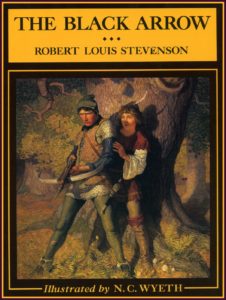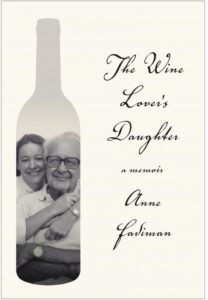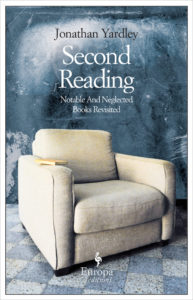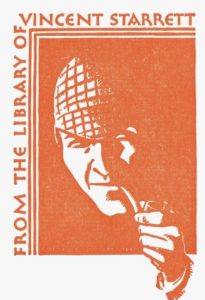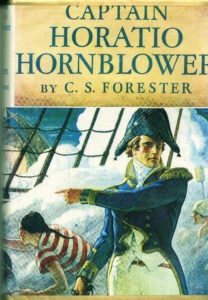 Beat to Quarters: Horatio Hornblower, Vol. 1, by C.S. Forester (1938, Book of the Month Club Edition, 220 pp.)
Beat to Quarters: Horatio Hornblower, Vol. 1, by C.S. Forester (1938, Book of the Month Club Edition, 220 pp.)
The theme this week, like last week, is: where have these books been all my life? How am I just now discovering the glory that is C.S. Forester’s Horatio Hornblower series?
I well remember seeing the ads for the television series that was broadcast from 1998 to 2003, but I never found the time to watch. I hadn’t even heard of the books upon which the series was based.
At that time, 18 years ago, I bought an omnibus edition from the Book of the Month Club that featured the first three Hornblower novels in one volume. When it arrived, I promptly put it on a shelf, and there it sat. Why am I reading it now? Because Jonathan Yardley reviewed this book in Second Reading, which long-suffering readers of this blog will recall I was reading three weeks ago. So what if it took nearly two decades to get around to? When I was finally prepared to receive its wisdom, there it was.
And a ripping good read it is, too. I was introduced to the fascinating grisliness of 18th and early 19th-century naval warfare through Evan Thomas’ splendid biography, John Paul Jones (2003). Anyone who’s watched the opening battle scenes from Master and Commander (2003) knows well the carnage wrought by shot and shell across a warship’s quarterdeck, leaving body parts and severed heads in their wake.
Rigid naval discipline meant that commanders like Jones and Hornblower were expected to stand tall on the quarterdeck throughout the terrifying ordeal of battle, rigid and unflinching, while bloody and mutilated comrades fell screaming all around. Any sign of cowardice brought shame and dishonor, worse even than losing limbs. Courage, discipline and level-headed seamanship under fire counted above all.
C.S. Forester’s knowledge of Napoleonic-era battleships and warfare is astonishing. The granular detail and intense descriptions of battle on the high seas make for gripping reading indeed. In Hornblower, a junior level captain in His Majesty’s Navy, Forester created an historical character whose interactions with his crew, the Lady Barbara Wellesley, and his own internal demons make him a fascinating psychological study in leadership. Like Sherlock Holmes, he is not always the most affable character, but you root for him even when you don’t always like him.
Forester is himself an interesting study, having appeared on a 1956 episode of Groucho Marx’s TV show, “You Bet Your Life,” and he is additionally the author of The African Queen (the 1935 book upon which the movie was based) and a 1942 children’s book entitled Poo-Poo and the Dragons. Any author who managed to work the words “hornblower” and “poo-poo” into his book titles is worthy of distinction.
Having serendipitously found the remaining twelve volumes in this series at the GHS book sale two weeks ago, I am going to become well acquainted with the further adventures of Mr. Hornblower.

